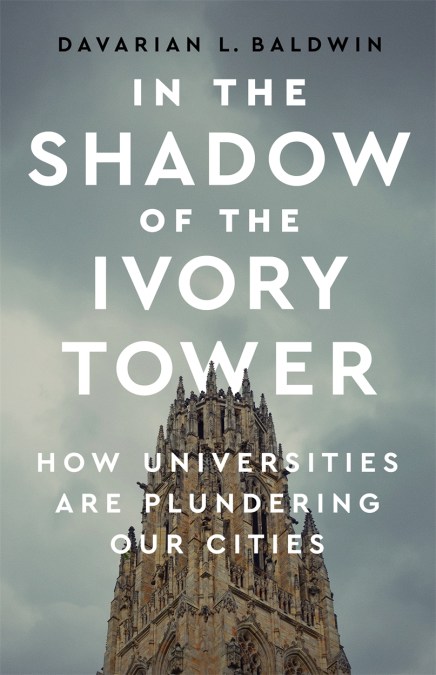In the Shadow of the Ivory Tower
On sale
15th April 2021
Price: £25
Selected:
Hardcover / ISBN-13: 9781568588926
American higher education is in crisis-costs continue to climb skyward while public funding is in decline. In response, university administrators have aimed to enrich their campuses and the surrounding areas with amenities to attract students and faculty, especially in urban areas where students can explore cities from the safety of the ivory tower. But what, then, becomes of the communities and cultures surrounding these campuses?
In In the Shadow of the Ivory Tower, historian Davarian L. Baldwin argues that urban universities have been key forces behind the gentrification of America’s cities; in fact, urban planners have used the profitable high-tech high-density model of the university campus as a blueprint for the city as a whole. As a result, the Black and Latino communities that largely surrounded campuses are left especially vulnerable, at the mercy of skyrocketing property values, discriminatory campus police forces and the need for low-wage high education labor. Universities are treating cities as their company towns, and catering to the whims of students for the sake of profit means that these longstanding communities are bulldozed over, metaphorically and literally. Despite these implications, everyone from New York to Arizona wants to build a UniverCity.
Baldwin takes us on a journey from his own university in Hartford to Chicago, from Phoenix to Manhattan, using these case studies to illustrate the increasingly parasitic relationship between higher education and urban planning. In the Shadow of the Ivory Tower is a wake-up call to the reality that higher education is no longer the ubiquitous public good it was once thought to be, and an urgent call for a more equitable relationship between American cities and universities.
In In the Shadow of the Ivory Tower, historian Davarian L. Baldwin argues that urban universities have been key forces behind the gentrification of America’s cities; in fact, urban planners have used the profitable high-tech high-density model of the university campus as a blueprint for the city as a whole. As a result, the Black and Latino communities that largely surrounded campuses are left especially vulnerable, at the mercy of skyrocketing property values, discriminatory campus police forces and the need for low-wage high education labor. Universities are treating cities as their company towns, and catering to the whims of students for the sake of profit means that these longstanding communities are bulldozed over, metaphorically and literally. Despite these implications, everyone from New York to Arizona wants to build a UniverCity.
Baldwin takes us on a journey from his own university in Hartford to Chicago, from Phoenix to Manhattan, using these case studies to illustrate the increasingly parasitic relationship between higher education and urban planning. In the Shadow of the Ivory Tower is a wake-up call to the reality that higher education is no longer the ubiquitous public good it was once thought to be, and an urgent call for a more equitable relationship between American cities and universities.
Newsletter Signup
By clicking ‘Sign Up,’ I acknowledge that I have read and agree to Hachette Book Group’s Privacy Policy and Terms of Use

